
Nicolai Abraham Abildgaard was a Danish neoclassical and royal history painter, sculptor, architect, and professor of painting, mythology, and anatomy at the New Royal Danish Academy of Art in Copenhagen, Denmark. Many of his works were in the royal Christiansborg Palace, Fredensborg Palace, and Levetzau Palace at Amalienborg.

Christian VII was King of Denmark and Norway and Duke of Schleswig and Holstein from 1766 until his death in 1808. His motto was "Gloria ex amore patriae".

Frederick V was King of Denmark and Norway and Duke of Schleswig-Holstein from 6 August 1746 until his death in 1766. A member of the House of Oldenburg, he was the son of Christian VI of Denmark and Sophie Magdalene of Brandenburg-Kulmbach.

Christiansborg Palace is a palace and government building on the islet of Slotsholmen in central Copenhagen, Denmark. It is the seat of the Danish Parliament, the Danish Prime Minister's Office, and the Supreme Court of Denmark. Also, several parts of the palace are used by the Danish monarch, including the Royal Reception Rooms, the Palace Chapel and the Royal Stables.

Louis August le Clerc, also known as Louis-Augustin le Clerc, was a French-born sculptor working in Denmark. He was born in Metz, France to copperplate engraver Sebastian le Clerc and his wife Charlotte van den Kerckhove. He was summoned to Denmark at the age of 47, and lived out the rest of his life there as a royal sculptor to the Danish Court and as professor at the Royal Danish Academy of Art. He helped introduce French Rococo artistic ideals to Denmark.
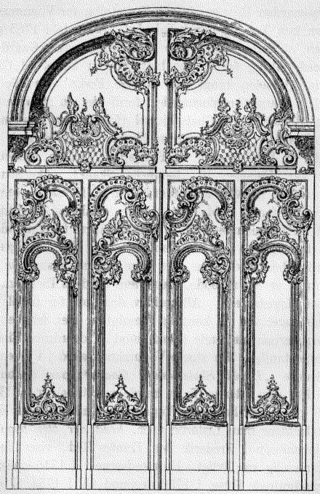
Nicolai Eigtved, also known as Niels Eigtved, was a Danish architect. He introduced and was the leading proponent of the French rococo or late baroque style in Danish architecture during the 1730s–1740s. He designed and built some of the most prominent buildings of his time, a number of which still stand to this day. He also played an important role in the establishment of the Royal Danish Academy of Art, and was its first native-born leader.
Hieronimo Miani, also known as Hieronymus Miani, was an Italian history painter, who worked in Denmark as both a painter to the royal court of King Christian VI, and as a teacher.
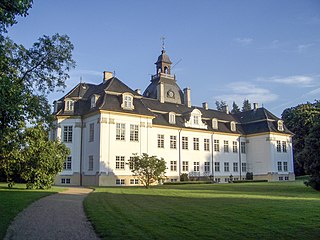
Charlottenlund Palace is a former royal summer residence in Charlottenlund, some 10 km (6 mi) north of central Copenhagen, Denmark. The palace was named after Princess Charlotte Amalie, who was responsible for the construction of the original palace. It was later extended and adapted for Crown Prince Frederick VIII to a design by Ferdinand Meldahl in the early 1880s.
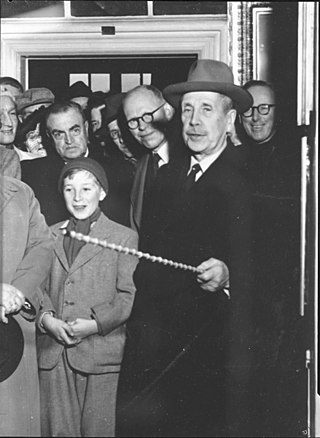
Stian Herlofsen "S. H." Finne-Grønn was a Norwegian lawyer, archivist, genealogist and museum director. He was widely regarded as Norway's preeminent genealogist of the 20th century. He founded and chaired the Norwegian Genealogical Society and edited the main Norwegian journals of genealogy and personal history, Norsk Personalhistorisk Tidsskrift and Norsk Slektshistorisk Tidsskrift. He served as director of Oslo Museum and as the archivist of Oslo Municipality.
Adam Gottlob von Krogh was a Danish military officer, and the son of Major General Caspar Herman von Krogh and his wife Christiane Ulrica née Lerche.

Marienlyst Castle is a palatial residence located in Helsingør, Denmark. It was named after King Frederik V of Denmark's second wife, Juliana Maria, the queen consort of Denmark and Norway. The building formerly served as a royal pavilion of Kronborg Castle and was mostly used as a venue for pleasure and hunting. It was also used by the director-general of the Øresund Custom House, Colonel Adam Gottlob von Krogh and his wife Magdalene, between 1796 and 1847.
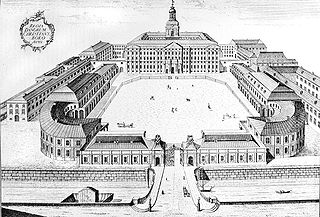
The first Christiansborg Palace in Copenhagen, Denmark, was built on Slotsholmen in 1745 as a new main residence for King Christian VI of Denmark-Norway. It was built on the same site as its predecessor, Copenhagen Castle, which had assumed a monstrous appearance and started to crumble under its own weight after several extensions.

The Prince's Mansion is a palatial Rococo-style mansion located at Frederiksholms Kanal in central Copenhagen, Denmark. It used to serve as the official residence of the Crown Prince of Denmark but now houses the National Museum of Denmark.

The Royal Stables is the mews of the Danish monarchy which provides the ceremonial transport for the Danish royal family during state events and festive occasions. The Royal Stables are located at Christiansborg Palace on the island of Slotsholmen in central Copenhagen, Denmark. In 1789, the number of horses reached a peak with 270 horses stabled. Nowadays, there are about 20 horses in the Royal Stables.

The Royal Horse Guards Barracks, at 26 Frederiksholms Kanal in Copenhagen, Denmark, served as barracks for the Royal Horse Guards from 1792 until 1866. The building is located along the south side of a gated alleyway which connects Frederiksholm Canal to Vester Voldgade. Together with Civiletatens Materialgård and Fæstningens Materialgård, it forms a cluster of low, yellow-washed buildings all of which are listed, on the Zealand side of the canal, opposite the small island Slotsholmen with Christiansborg Palace. The Hay Storage Building at the end of the barracks building, facing Vester Voldgade, originally stored hay for the King's horses at the Royal Stables but later also served the Royal Horse Guards. Both the Royal Horse Guards Barracks and the Hay Storage building are now used by the Ministry of Education.

Ny Vestergade is a street in central Copenhagen, Denmark. It runs from Frederiksholms Kanal to Vester Voldgade and together with Christiansborg's riding grounds, Marble Bridge and Dantes Plads forms an axis between Christiansborg's tower in the east and Ny Carlsberg Glyptotek's dome in the west. The National Museum's main entrance is located in the street. Ny Vestwrgade 9, Ny Vestergade 11 and Ny Vestergade 13 are listed on the Danish registru of protected buildings and places.

Schneekloths Skole was a school which under changing names existed between 1854 and 1992 in Copenhagen, Denmark. Its former premises on Værnedamsvej in Frederiksberg now houses the French-language school Lycée Français Prins Henrik.

Curt Christoph von Koppelow or Cort Christopher von Caplau (1624–1705) was a German-Norwegian nobleman and officer in the Dano-Norwegian army. Von Koppelow was the commander of Munkholmen fortress in Trondheim, Norway, between 1700 and 1704. He was the father to Norwegian General Major Jürgen Christoph von Koppelow

Jürgen Christoph von Koppelow or Jørgen Christopher von Koppelau (1684–1770) was a Norwegian nobleman and officer that fought in the Great Northern War on behalf of Denmark–Norway. Von Koppelow was the son of Curt Christoph von Koppelow, a German-Norwegian nobleman from the House of Koppelow in Mecklenburg-Schwerin. Von Koppelow led the Norwegian Army's 3rd Søndenfjeldske Dragoon Regiment upon its establishment in 1750.
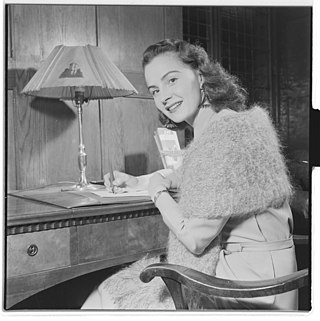
Gerd Margareta Fahlén was a Swedish actress.




















